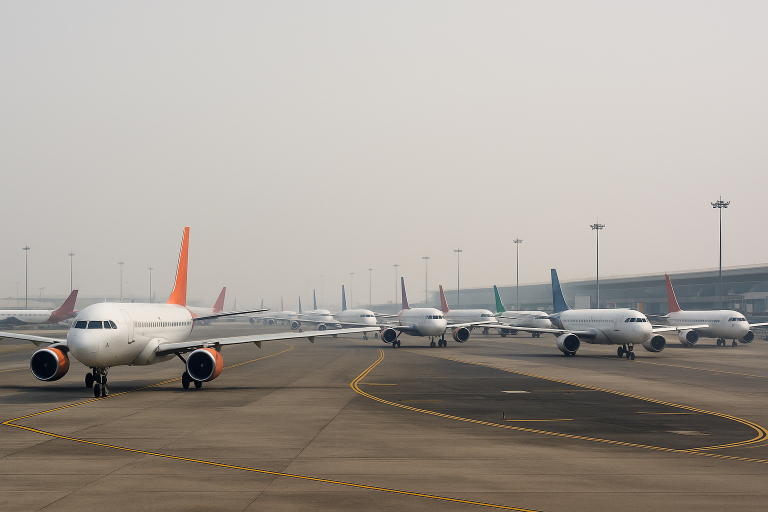About 200 flights departing from New Delhi’s Indira Gandhi International Airport have been delayed after a technical fault crippled its Air Traffic Control (ATC) systems on Thursday evening.
The glitch, which disrupted the Automatic Message Switching System used for generating and transmitting flight plans, forced controllers to switch to manual operations.
As the busiest airport in India and among the top ten globally by passenger traffic, the disruption at Delhi airport was significant.
It highlights how critical digital infrastructure reliability has become for aviation safety and efficiency in one of the world’s fastest-growing air travel markets.
Technical malfunction slows flight clearances
The system error first appeared in the ATC’s auto-track function, which prepares flight plans and routes for departing aircraft.
The Airports Authority of India confirmed on Friday that the fault was linked to the Automatic Message Switching System, a key network supporting ATC data management.
Controllers had to process flight plans manually, increasing the separation between departing aircraft to maintain safety.
This manual procedure reduced airspace efficiency and slowed departure clearances across multiple airlines.
Technicians have been working to restore the system, but delays are expected to continue until full automation is reinstated.
Airlines and passengers face ripple effects
Airlines, including IndiGo, Air India, and SpiceJet, reported operational delays through posts on X (formerly Twitter), while passengers flooded social media with updates about waiting times and missed connections.
Hi, we regret the inconvenience caused. The flight is delayed due to the consequential impact of air traffic congestion at Delhi Airport. We assure you that our team is doing its best to get the aircraft airborne at the earliest. Your understanding during this interim is highly
With the airport handling 73.7 million passengers in 2024, the glitch created congestion both on the ground and in the air.
IndiGo and Air India, which account for a major share of domestic and international flights out of Delhi, faced widespread schedule disruptions.
Smaller carriers also experienced cascading effects as the departure backlog interfered with aircraft rotations across cities.
Manual planning exposes airspace inefficiencies
Under manual control, air traffic controllers must allow greater time and distance between aircraft to prevent conflicts.
This results in inefficient airspace utilisation and longer wait times for takeoffs.
The temporary increase in separation standards has sharply reduced runway throughput.
Such manual procedures, though essential for maintaining safety, are less adaptable to high-volume airports like Delhi, where departures are scheduled within minutes of each other.
The slowdown shows how dependent large airports have become on automated systems to synchronise hundreds of daily operations.
The post India’s Delhi airport hit by major ATC malfunction as 200 flights face delays appeared first on Invezz

